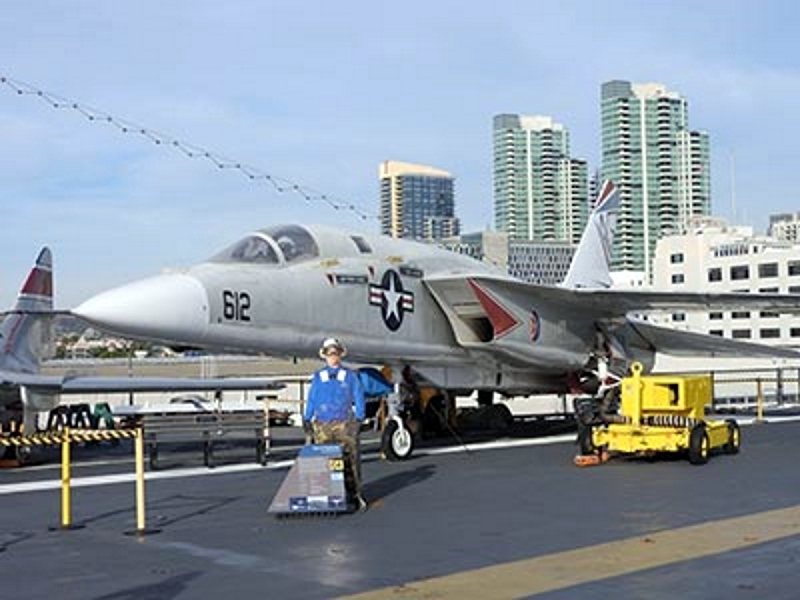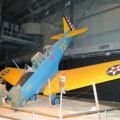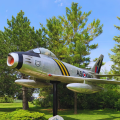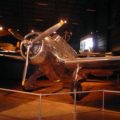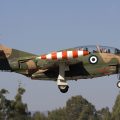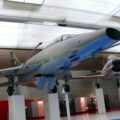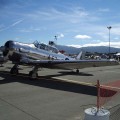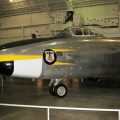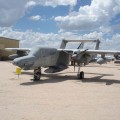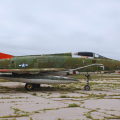Komisia Severoamerický A-5 Vigilante je americký nadzvukový bombardér navrhnutý a postavený spoločnosťou North American Aviation pre námorníctvo Spojených štátov. Jeho služba v úlohe jadrového úderu, ktorá nahradila Douglas A-3 Skywarrior, bola veľmi krátka; ako RA-5C však zaznamenal rozsiahlu službu počas vojny vo Vietname v prieskumnej úlohe taktického úderu. Pred zjednotením sekvencie označenia námorníctva so sekvenciou letectva v roku 1962 bol označený ako A3J Vigilante.
Viac info:
Komisia Severoamerický A-5 Vigilante bol nadzvukový bombardér na palube, ktorý bol navrhnutý a vyrobený spoločnosťou North American Aviation pre námorníctvo Spojených štátov. Pôvodne bol označený ako A3J Vigilante pred rokom 1962, keď námorníctvo a letectvo zjednotili svoje systémy označovania. A-5 Vigilante mal byť jadrovým útočným lietadlom s dlhým doletom za každého počasia, ale počas svojej služby sa väčšinou používal ako taktické prieskumné lietadlo.
A-5 Vigilante mal elegantný dizajn s vysokými krídlami, s dvoma prúdovými motormi General Electric J79-GE-8 s prídavným spaľovaním namontovaným v zadnom trupe. Mala dvojčlennú posádku: pilota a navigátora. Najvýraznejšou črtou A-5 Vigilante bol jeho vnútorný bombový priestor, ktorý mohol niesť jednu jadrovú zbraň, ktorá bola vysunutá dozadu cez tunel medzi výfukovými plynmi motora. Tento systém bol navrhnutý tak, aby sa zabránilo aerodynamickému odporu a nestabilite spôsobenej otváraním dverí konvenčných bombových priestorov pri nadzvukových rýchlostiach. Tento systém sa však ukázal ako nespoľahlivý a problematický a často bol nahradený externými palivovými nádržami.
Prvý prototyp A-5 Vigilante vzlietol 31. augusta 1958 a o päť dní neskôr prelomil zvukovú bariéru. 13. decembra 1960 A-5 stanovil svetový výškový rekord 27 874 metrov (91 450 stôp). A-5 Vigilante vstúpil do služby s americkým námorníctvom v júni 1961, ale jeho úloha jadrového bombardéra bola čoskoro opustená kvôli vzniku balistických rakiet odpaľovaných z ponoriek a nespoľahlivosti systému dodávky zbraní. Namiesto toho bol A-5 Vigilante prestavaný na prieskumné lietadlo označené ako RA-5C. RA-5C mal výkonnejšie motory, väčšie krídla, zvýšenú kapacitu paliva, štyri podkrídlové pylóny a senzor pod trupom, ktorý niesol kamery a elektronické vybavenie.
Komisia RA-5C Vigilante počas vojny vo Vietname zažil rozsiahle akcie, lietal vo vysokých rýchlostiach a v nízkych výškach nad nepriateľským územím. Bol schopný poskytnúť cenné spravodajské informácie a informácie o cieľoch pre iné útočné lietadlá. Utrpel však aj ťažké straty v dôsledku nepriateľskej paľby a nehôd. Zo 156 RA-5C postavených alebo prestavaných z A-5A a B bolo 43 stratených v boji a 18 pri nehodách. RA-5C Vigilante bol vyradený zo služby v septembri 1979 po relatívne krátkej, ale rušnej kariére.
